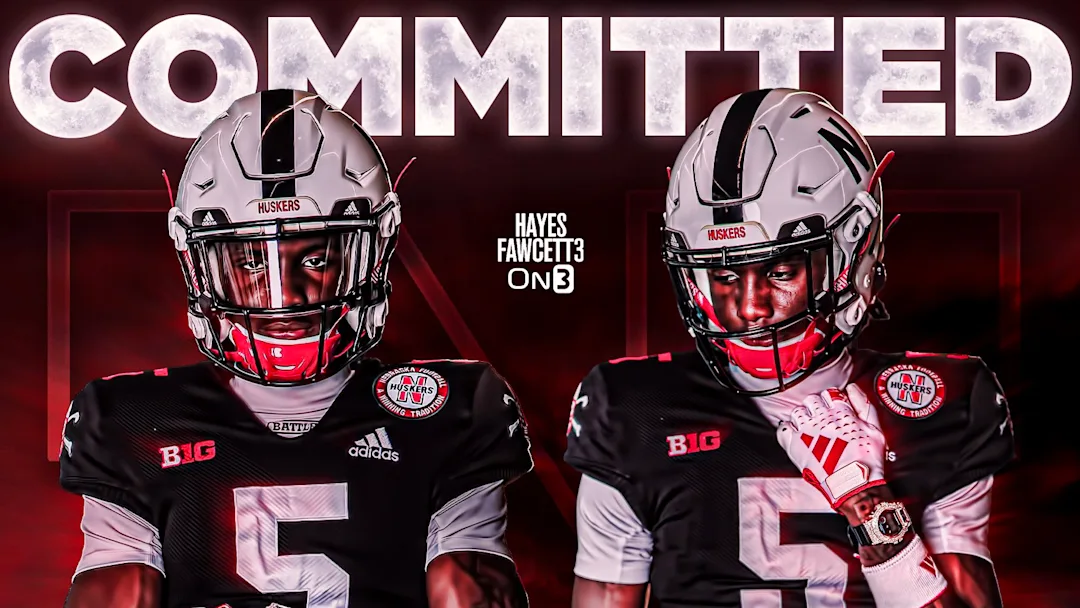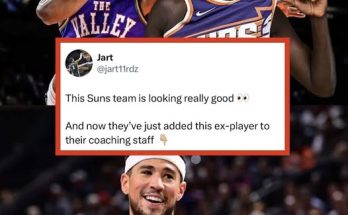In a recruiting twist few saw coming, one of Oklahoma’s top defensive back prospects has delivered a seismic jolt to the college football landscape by pledging his commitment to the Nebraska Cornhuskers over the hometown Sooners. The decision, which immediately set social media ablaze and sent shockwaves across the Big 12 and Big Ten, reflects the growing power shift in college football recruiting—and leaves Oklahoma fans reeling as Nebraska fans erupt with excitement.
The defensive back in question, a four-star talent who had long been considered a near-lock for Oklahoma, had been courted by Brent Venables and his staff for months. With family ties to the state, regular visits to Norman, and several insiders projecting him as a Sooners lean, few believed Nebraska had a legitimate shot—until now. His commitment to Nebraska is more than just a win on the recruiting trail; it’s a symbol of Nebraska’s steady resurgence under head coach Matt Rhule and a stark warning to traditional recruiting powers that no prospect is safe anymore.
What made this decision even more dramatic was the buildup. After a dominant junior season that saw the defensive back notch multiple interceptions, break up dozens of passes, and earn All-State honors, he quickly became one of the hottest names in the 2026 recruiting cycle. Oklahoma made him a priority early, hosting him for unofficial and official visits, rolling out the red carpet in a way that made many feel the Sooners were simply waiting for the commitment to be made public. Coaches saw him as the future centerpiece of their secondary, a player who could thrive in their aggressive defensive scheme and bring championship-caliber toughness to Norman.
But quietly, Nebraska was making its move.
While other schools made flashy NIL pitches or leaned on regional loyalty, Nebraska built a deeper bond. Rhule and his staff, led by secondary coach Evan Cooper, emphasized development, family values, and a chance to be part of something special—a rebuild with real teeth. They painted a vision not just of playing early but of leading a renaissance in Lincoln, restoring the Blackshirts to national relevance and becoming a foundational piece of a team that expects to compete for Big Ten titles.
That message hit home. And behind the scenes, Nebraska’s consistency, culture, and clear plan began to chip away at Oklahoma’s lead. The final official visit sealed the deal. From the facilities to the campus environment, to meetings with academic advisors and conversations with current players, Nebraska checked every box. More importantly, they made the young star feel like a priority—not just another cog in a blue-blood machine, but a future face of the program.
When the commitment went public, the reactions couldn’t have been more different. Nebraska fans exploded with celebration, hailing it as one of the most important recruiting wins of the Rhule era. They recognized the magnitude of plucking a top Oklahoma prospect right out from under the Sooners’ nose. On the other side, Oklahoma fans were stunned. Many were in disbelief, questioning how such a pivotal recruit, one with seemingly deep Oklahoma roots, had slipped away. Some pointed fingers at NIL mismanagement, while others questioned whether the coaching staff had underestimated Nebraska’s momentum.
But one thing is clear: this isn’t the same old Nebraska. Under Rhule’s leadership, the Cornhuskers have quietly become a recruiting force again. Their messaging is resonating with top-tier athletes. They’re showing that development, opportunity, and culture still matter in an era often defined by dollar signs and media flash. This commitment is proof of that, and a clear signal that Nebraska’s days of being an afterthought on the trail are over.
For Oklahoma, the loss stings. Not just because of who they lost, but where he went. Nebraska isn’t just another program—they’re a historical rival, and their return to prominence could pose major challenges moving forward, especially as both programs target similar talent pools. Missing on a local blue-chip defender to a rebuilding Nebraska team isn’t just a recruiting L—it’s a branding hit. It sparks questions about whether the Sooners are keeping pace with the evolving recruiting game, especially with other regional powers like Texas, LSU, and now Nebraska becoming more aggressive.
There’s still time for Oklahoma to recover. The 2026 cycle is far from over, and flips happen. But this one feels different. The prospect spoke passionately about his decision, calling it “the hardest choice I’ve ever made, but the one that felt right in my heart.” He praised Nebraska’s staff for never treating him like a backup plan and spoke of wanting to help “bring back the glory days” in Lincoln. It didn’t feel like a decision made on a whim or under pressure—it felt like a young man who believes in a vision and is betting on himself to be part of something bigger than just football.
That’s what makes this so compelling. In an era where flashy graphics and NIL dollars often dictate recruiting outcomes, this decision came down to trust, belief, and the chance to lead. Nebraska made a convincing case—and now they have one of the country’s top defensive talents to show for it.
The commitment also raises the stakes for Oklahoma’s 2026 class. Every year, the Sooners expect to compete for top-10 recruiting rankings and position themselves for College Football Playoff contention. Losing a player of this caliber—especially to a bordering state rival—forces the staff to recalibrate and possibly pursue other targets with greater urgency. It also puts pressure on the current coaching staff to produce results this season, as every recruiting miss brings increased scrutiny.
For Nebraska, this is a moment to savor. They’ve been rebuilding brick by brick, slowly regaining national respect. This commitment doesn’t just boost their ranking—it sends a message that the Cornhuskers are officially back in the fight for elite talent. It’s validation of Matt Rhule’s approach and proof that even in a competitive landscape, there’s still room for programs built on grit, honesty, and a powerful long-term vision.
It’s also a victory that could open new doors. Recruiting is often about momentum, and when top players start choosing your program over traditional powers, others take notice. High school teammates, 7-on-7 peers, and national analysts now view Nebraska through a different lens. If they can keep stacking wins like this, the rebuild won’t just be a dream—it’ll be a reality.
The defensive back’s commitment video, which featured dramatic visuals, a heartfelt message to his family, and a surprise Nebraska reveal at the end, encapsulated the emotion of the moment. It wasn’t about making a flashy headline—it was about making a statement. And the statement was clear: Nebraska isn’t done yet. They’re building something, and they’re doing it with purpose.
As the dust settles, both fanbases are left with lingering emotions. Oklahoma with the sting of what might have been, Nebraska with the thrill of a new beginning. For the young prospect, it marks the start of an exciting journey—one where he’ll enter college football not just as a talented recruit, but as a symbol of hope, belief, and the shifting tides of the sport. And for the rest of the country watching, it’s a reminder that in recruiting, nothing is guaranteed—except surprises.

